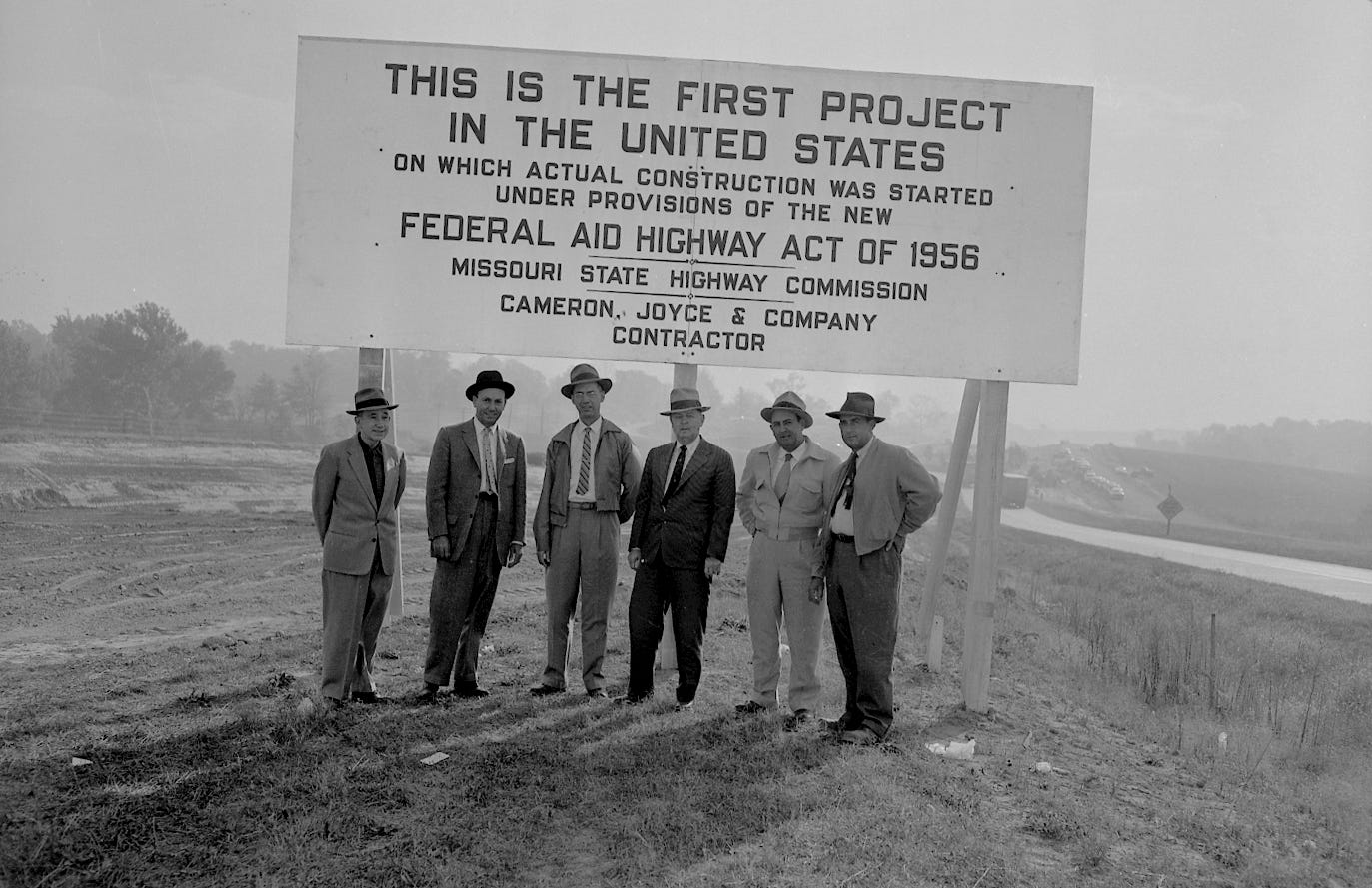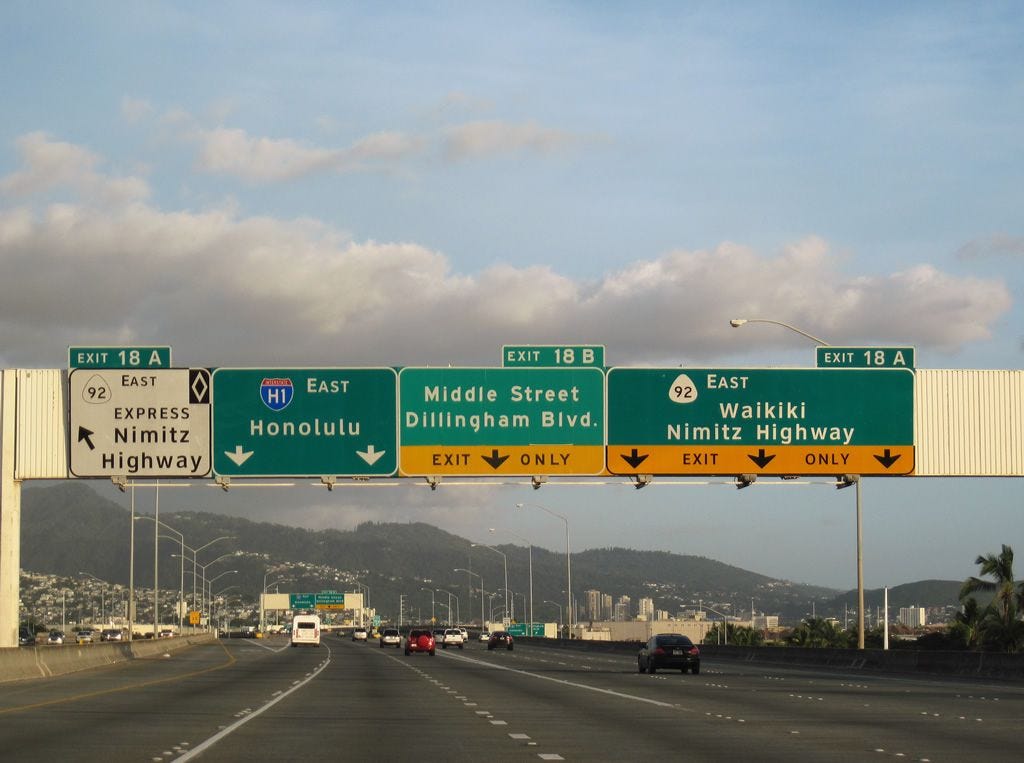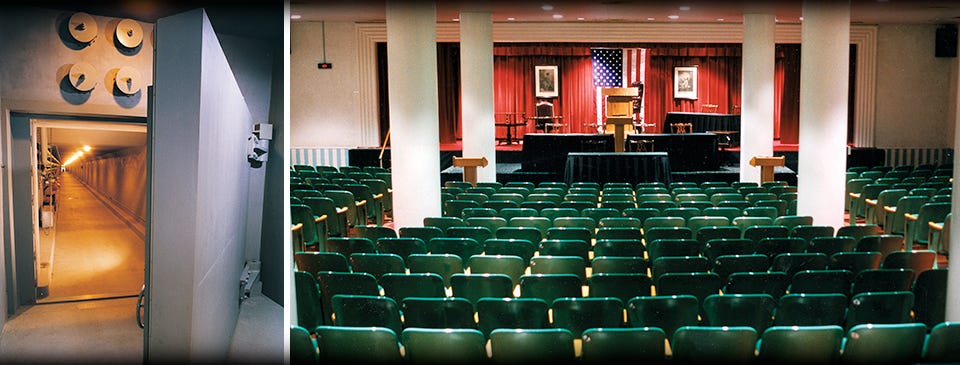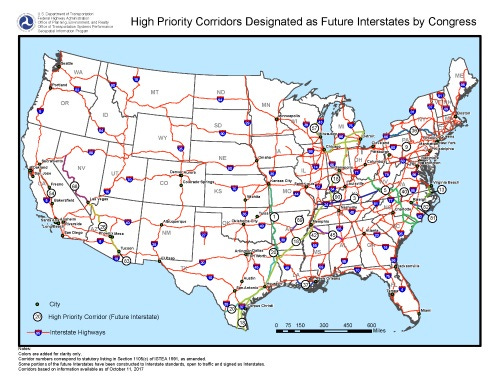Ricochet is the best place on the internet to discuss the issues of the day, either through commenting on posts or writing your own for our active and dynamic community in a fully moderated environment. In addition, the Ricochet Audio Network offers over 50 original podcasts with new episodes released every day.
 Could We Build Our Interstate Highway System Today?
Could We Build Our Interstate Highway System Today?
Today is the 65th Anniversary of the Federal Highway Aid Act, which launched President Eisenhower’s long-held vision of a national interstate highway network.
Every time I mention Dwight Eisenhower as the most consequential President of the past 70 years, I get quizzical looks.
What about Ronald Reagan, I’m asked? Fair enough. Reagan transformed not just a major political party or even our national economy but the world by helping the former Soviet Union drive itself six feet underground. All good. Much of it sadly has been or is being undone by subsequent Presidents, politicians, and Congresses, sadly enough.

But our Interstate Highways System persists and remains a crown jewel of our economy, even our way of life.
This holiday weekend, or the next time you hop on I-395, I-295, I-270, or I-66 leaving Washington, or perhaps I-76, I-476, or I-95 escaping from the “greater” Philadelphia region, think of President Eisenhower. My wife and I have driven more than 4,000 miles across 20 states since January; the interstate highways we traversed are almost too many to recite, from I-270 in Maryland to I-40 from west Texas to North Carolina. You Californians practically live on the parking lots you call freeways.
The system touches every state – even Hawaii.

As a young lieutenant colonel in 1919, just as automobile ownership and use were exploding across the US, Eisenhower was part of a military expedition (Military Transport Corps) to determine how difficult it would be to move troops from one end of the country (Washington, DC), much of it along the Lincoln Highway to the other (San Francisco). It took 62 painful, arduous days. He referenced that trip in a book he would later write.
And later, General Eisenhower would be impressed with Germany’s autobahn highway system during WWII, which facilitated the movement of enemy troops and supplies.
Today, you can make Eisenhower’s 1919 trip (not on the same roads) in as little as two, maybe three, very long days, depending on how much of a hurry you are in and how much help you have behind the wheel. Truckers do it frequently, even routinely (although they have federal regulations limiting how much time they can spend road on any given day). Given the massive growth in federal regulations over infrastructure projects, from laws protecting endangered species to many other things, I wonder if we could achieve today what Eisenhower started?

On this day in 1956, President Eisenhower signed the Federal Aid Highway Act that made today’s 41,000-mile “national system of interstate and defense highways” possible. Today, the Pennsylvania Turnpike (I-76) is considered the “grandfather” of the interstate system. The longest interstate highway, at 3,200 miles, is I-90 connecting Boston with Seattle. It amazes me that we have 5 major east-west interstate highways, including I-80, I-70, I-40, and I-10.
But Eisenhower didn’t stop there. Remember, he was President during the “Cold War,” and worried about continuity of government in case of a nuclear attack from the Soviet Union. Many of us remember, well into the 1980s, how odd it was that Interstate 64 from Richmond ended not far from White Sulphur Springs, WV (it has since been completed); or that an Amtrak train from Washington, DC also weirdly ended near the same location.
The reason was exposed in 1992 when the Washington Post uncovered the fact that the Greenbrier Resort, under a secret agreement with Congress in 1955, was established as a secret “bunker” for Congress to be preserved. A visit to the Greenbrier resort is not complete without a “bunker tour.” Interstate 64 and the Amtrak train were designed to expeditiously ferry government officials to an undisclosed location under the imminent threat of a nuclear attack. Congress has since made other contingency plans.

Now, of course, we have miscreant politicians trying to interpose cultural issues (racism, of course) on the construction of the interstate system. Of course, mistakes were made that divided cities from waterfronts and divided or paved over neighborhoods. A house in which I grew up in north Tulsa, Oklahoma, is now paved over by an interstate. Those in Philadelphia are painfully reminded of how the failure to make I-95 a tunnel underneath Philadelphia divided the city from its Delaware River waterfront. It’s a travesty. Constructions contracts have been enmired too frequently in often corrupt practices and failed management.
But that was not Eisenhower’s fault. The impact of his vision, born out of painful experience nearly 40 years earlier, was no less impactful on our economy (and national defense) than today’s digital revolution. He deserves honor and praise.

Yes, these highways and bridges need some maintenance and updating. Trucks should be equipped with an extra axle to better distribute weight, improve safety, and allow them to carry more goods. And electric vehicles, which often weigh more than conventional autos, should not be subsidized, but instead, pay their fair share to maintain roads and bridges.
That’s why a highly focused infrastructure bill – focused on roads, bridges, ports, some mass transit, and broadband – is a good thing. Let’s hope Congress gets its act together and produces something sooner than later that doesn’t micromanage what the more inventive and better-managed states can fully implement or infect with the CRT (Critical Race Theory) virus. I can’t say that I’m optimistic.
Disclosure: I served as Deputy Assistant Secretary for Public Affairs at the US Department of Transportation in 1991-92 – the last time that the federal gas tax was increased under the Intermodal Surface Transportation and Efficiency Act (ISTEA), during the George H. W. Bush Administration.
Published in General



Absolutely not. Highways are racist. The vehicles that traverse them exacerbate the existential climate emergency and contribute to the spread of Covid variants. And the structures divide communities and deface Mother Earth. You have to be a White Supremacist to even contemplate such a thing.
Of course not, unless it was expressly restricted to electric vehicles, with light rail down the medians. Well, maybe the environmental lobby would even tie that up in eternal litigation.
I agree that prospects of a narrowly focused real infrastructure bill are slim to none. That is sad. Your post on Eisenhower and the interstate system called to mind Hoover and what became known as the Hoover Dam. The NPS Hoover Dam page tells us [emphasis added]:
So, we had a bit of a trial run for the interstate project in a vertical construction project that stands firm to this very day. Bechtel, one of the original six contractors, boasts of the speed and cost savings in Hoover Dam construction:
When I was a kid going from Portland, OR to Nashville, TN, we would start out in the evening, Dad would drive all night and all the the next day. We’d spend the night in a motel, and he’d drive all the next day and all night and we’d arrive early in the morning.
I’ve driven from Knoxville to Denver several times. It takes about 23 hours.
Something that actually fits the general welfare clause. Yes, please.
You got the first part of the Hoover Dam story that is part of the answer to “Could we build the Interstate Highway system today”.
But, as Paul Harvey used to say, now….the Rest of the Story.
Hoover dam was built in the middle of the Depression, in the middle of a desert. In addition to the dam, they had to build a city to house the workers building the dam. Nevertheless, the project was completed from start to finish in five years (and only two of that for the actual concrete pouring)
In the 1970s it was decided that the dam needed a new visitors center. Money was appropriated in 1984. The new center finally opened in 1995.
This book details Ike’s 1919 cross-country journey, which planted the notion in the young soldier’s mind of the benefits of a national highway and defense system. Fascinating read.
https://www.amazon.com/American-Road-Story-Transcontinental-Journey/dp/080506883X/ref=tmm_hrd_swatch_0?_encoding=UTF8&qid=1625092930&sr=1-2
Very interesting! I’m glad we have the Interstate system, and now I know who is responsible for it. Thank you for sharing!
It’s very easy to get projects like this done today, we do it all of the time. Massive internal improvements projects get bureaucrats filthy rich, and we have no shortage of bureaucrats that need more riches and political influence. Eisenhower wasn’t the first to do this, it’s an extention of Clay’s American System that really kicked into high gear after the 1860s.
I have a lot of respect for some of the earlier presidents who vetoed bills for federal internal improvements as unconstitutional. There has never been an amendment to make them constitutional. An interesting thing about the Confederate Constitution, and a big reason why you don’t learn about it in school, is that it specifically does not allow for internal improvements at the central government level.
Nice, informative post Kelly. Thanks.
The Interstate system created great benefits, which are readily quantifiable and make themselves known to each new generation.
But also great human costs which were never quantifiable and are in any case forgotten as time goes by. The way we lived and thrived together as real, normal, unique, varied human beings and communities.
Worth the costs? I don’t know. Very likely not, I reckon. In my adoptive city of Cincinnati even the remembered, daily visible costs, those you see driving down the hideous monstrosity of I-75, are nightmarish.
For me the 1950s were a wave of polluted water that permanently inundated American culture, and the Interstate System, with all its huge tangible benefits is a major part of the volume.
Kelly, your last paragraph says it all. When she’s not busy trying to screw the U.S. Military, Senator Kirsten Gillibrand still found the time to weigh in on the “infrastructure” bill:
“Paid leave is infrastructure. Child care is infrastructure. Caregiving is infrastructure”.
As long as we have doofuses like Gillibrand in the Senate, what chance do we have of getting anything done with our (real) infrastructure?
The same may be true of the internet.
Like many of you all I’ve traveled on first world roads and third world macadam and still when I drive in the US (though they may not be the world’s best road) I’m still impressed with the presence of the roads and miles of the roads. Driving from, say, New York to West Palm Beach is a comparative dream compared to the roads of a hundred or two hundred years ago.
Yeah, three things I always appreciated after returning from an overseas deployment:
I remember being startled in the 60’s when I read that I-40 through the mountains cost $1 million/mile. You couldn’t pave a mile on the prairie for that now.
No lady, those things are all something, but they’re not infrastructure. Figure out what to call them (how about “something between you and your boss” or “personal family concerns”?), and then deal with that. “Infrastructure”addresses the physical framework of our country, the actual nuts-and-bolts required to keep all the other things (like child care and caregiving) possible. You can drive to your pediatrician or to your daycare center, but it is not considered “automobile maintenance”.
This women is ridiculous.
This should probably be a whole separate post, but I (think) I remember when our Congressional Representatives were serious people doing serious things. Is that rose colored glasses reflecting on the past, or has some percentage of them always been this
ridiculousstupid but they just didn’t get exposure in the pre-media age?Having recently traversed I-40 for 1200 plus miles from Oklahoma City to Barstow, Ca (where it ends, curious why it did not go to LA; will have to read the book) surprised how good a condition the road was in. Weird stuff in New Mexico with the rail guards getting trashed but a pretty smooth trip. Ike did a good job.
And yet, she keeps getting re-elected…
I thought she was relatively new.
I suppose if you compare her to Schumer she might be considered “new”, but she’s been in the Senate since 2009 (before that she did a term in the House). She’s been there long enough for people to know who they’re voting for…But they still vote for her.
I’m waiting for CRT to be declared “educational infrastructure” . . .
And when you flipped on the light switch, the lights actually came on. It was often 50-50 over there.
I-40 has to close in the mountains of NC or TN every so often because of rock slides. Very expensive.
Plus, they’ve had at least one tunnel collapse.
I enjoy driving the interstates. I live in Alaska, and while there is an interstate rated roads near Anchorage, It’s not very long. So when I travel to the lower forty-eight, I rent a car for a week or two at a time, and my activities include a lot of interstate driving.
I’ve also done some driving on Germany’s autobahn, and there is a key difference in their layout versus the United States. They are used as a road between cities, and are not a part of them. The autobahn bypasses cities, and ends going into a city.
And that was the major mistake of the United States’s interstate system. From what I read, Eisenhower had little choice during his negotiations with Congress but to accept that layout if he wanted it to pass. But consider, if Eisenhower had done nothing, it would be ridiculous to say that we would not have had freeways. Every industrialized country has a freeway system of some kind.
Even if it had been left to the states, we still would have developed a system that would have worked.
As much as I love driving it, I think that what we have was over built.
Overbuilt? If it’s near cities it is far, far too underdesigned and underbuilt.
It takes 20+ years from beginning to end to have an interstate highway constructed. By the time it is constructed near a city, it is already outdated and obsolete.
They’re working on 285 around Atlanta almost continuously.